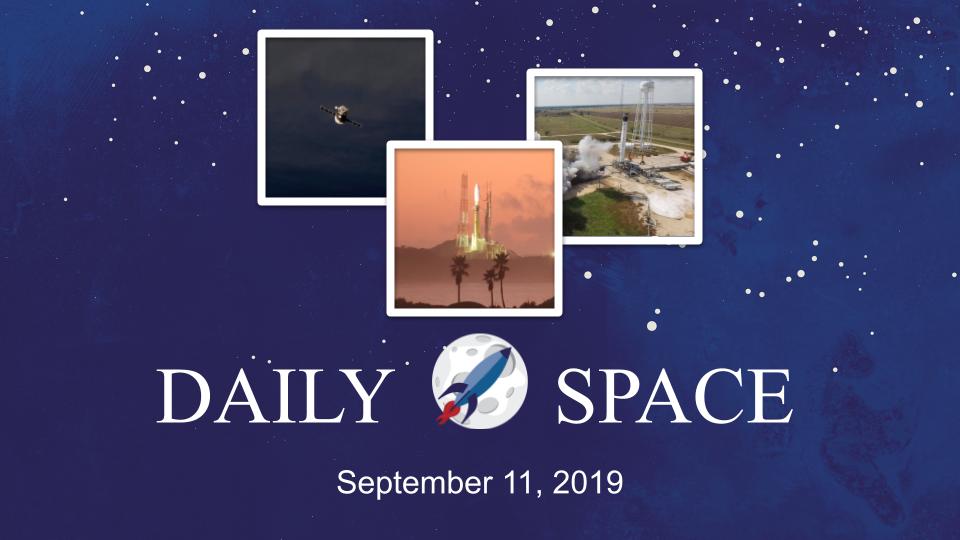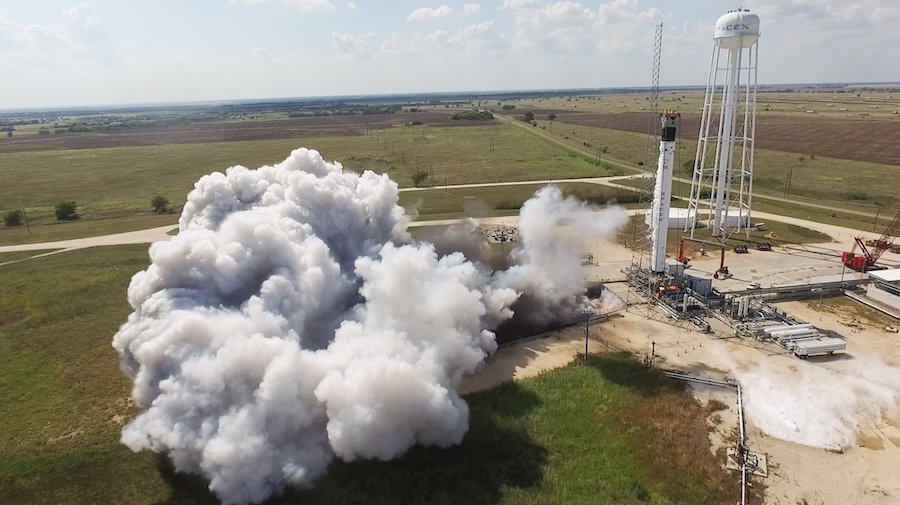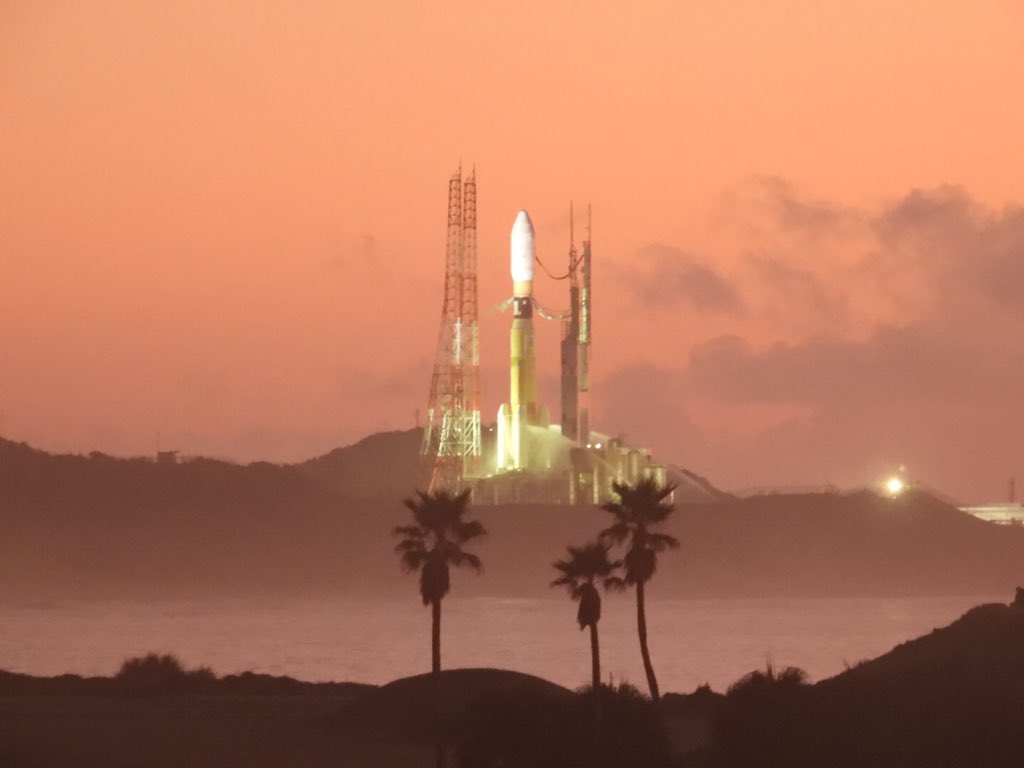
It’s Wednesday, and that means it’s time for a round up of all things rocket related. Today’s multi-national news has no actual launches, but includes updates on SpaceX’s preparations for crewed launches, the landing of Skybot, problems on the pad for JAXA, and China’s plans to launch Earth observers on a Long March 4B.
Links
SpaceX’s preparations for crewed launches
- SpaceX’s first rocket built for humans test-fired in Texas (SpaceFlight Now)
The landing of Soyuz MS-14 with Skybot
Problems on the pad for JAXA
- JAXA to launch eighth HTV space station cargo mission in September (SpaceFlight Now)
- Kounotori 8 (Wikipedia)
- H-II Transfer Vehicle (Wikipedia)
- H-IIB (Wikipedia)
- HTV8 Payload (JAXA)
- Launch Of Rwanda’s 1st Satellite And Egypt’s 8th Satellite Rescheduled For September 2019 (Space in Africa)
- Today’s launch is postponed because we found a fire around the hole at the deck of the mobile launcher at 3:05 a.m. JST. Now we are trying to extinguish a fire. #H2BF8 (Twitter)
- #nvslive#h2bf8#htv8 (Twitter)
- Launch Canceled, H-II Transfer Vehicle KOUNOTORI8 aboard the H-IIB Vehicle No. 8 (Mitsubishi Heavy Industries site)
- #H2BF8#HTV8#GOHTV8 (Twitter)
Vega launch failure investigation
- Investigators narrow cause of Vega launch failure to second stage (SpaceFlight Now)
China’s plans to launch Earth observers on a Long March 4B
- Science experimental satellite BNU-1 to be transported to launch site(1/6) (Ecns.cn)
- BNU-1 (RocketLaunch.Live)
- Beidou-3I2Q (BD-3/IGSO-2) (RocketLaunch.Live)
Transcript

On August 29th, SpaceX successfully performed static fire test of the brand new F9 booster which will eventually carry NASA astronauts Bob Behnken and Doug Hurley to the ISS aboard a Crew Dragon capsule.
Back in April, there was a pad failure of the 1st Crew Dragon capsule — the same capsule which had previously successfully launched on the uncrewed Demo-1 cargo mission in March to the ISS & returned safely to the Earth.
The cause of the April test pad failure was traced to a failed check valve in the capsule’s fuel system which allowed fuel & oxidizer to mix in the lines leading from the tanks to the engines which power up during an emergency abort. SpaceX was hopeful that it could replace the industry-standard burst discs with re-usable check valves, but given the checkered history of those valves in rocketry as a whole, this one incident was apparently enough for them to go with the one-time use discs. The burst discs act as solid barriers, completely preventing the flow of the liquid in the line until the pressure exceeds the disc’s rating. At that point it bursts (hence the name), allowing free flow of the liquid, but requiring that the discs at least must be tested or replaced after every use of the capsule, even if the emergency abort isn’t activated.
SpaceX appears to be on track for an unmanned in-flight abort test mission in “October or November” using the company’s second flight-ready Crew Dragon.
The timing of the Demo-2 crewed mission has not been announced, but will follow some time after the in-flight abort test, using a third flight-ready capsule.

The Soyuz MS-14 capsule, with Skybot aboard, made a rare night time automated landing on Friday at 21:32 UTC after a dramatic series of docking events, and a week and a half of testing the humanoid remote-controlled robot.
A JAXA H-2B rocket was scheduled to launch the HTV-8 mission on Wednesday, September 10, 2019 at 21:33 (UTC), on what would have been the 10th anniversary of the first Kounotori launch.
“The name Kounotori was chosen for the HTV by JAXA because ‘a white stork carries an image of conveying an important thing (a baby, happiness, and other joyful things), therefore, it precisely expresses the HTV’s mission to transport essential materials to the ISS’.”
A fire broke out on the pad at 3:05 am Japan Time and was continuously combated until after dawn.
Even though the streams of water were aimed at the rocket and SRBs, the fire was actually under the rocket, on the mobile launcher.

No new launch date has been announced as teams from both JAXA and Mitsubishi Heavy Industries need to inspect the site and equipment for damage. This is a very serious event, but there were no injuries. The health of the rocket, SRBs and mobile launcher are unknown at this time.
Investigators announced Monday that they have narrowed the cause of the Vega launch failure on July 10th to the upper stage solid rocket motor. They believe that hot gases (~3,000°C / ~5,400°F) released by the burning solid fuel mixture was somehow able to come in contact with the domed structure at the front of the stage in front of the motor, causing structural failure.
Giulio Ranzo, CEO of Avio, the manufacturer of the Vega rocket, said, “It’s difficult to pinpoint exactly where within the forward dome this may have happened, but the forward dome being the cap — the top cap — of the motor on the opposite side of where the nozzle is, it’s a fairly limited area in the motor. Therefore, there’s likely a limited number of things that we need to go back and check in order to fix it.”
The Falcon Eye 1 mission to place a UAE recon satellite into LEO was the first failure in 15 launch attempts by the Vega, and the investigation was co-chaired by ESA & Arianespace. The mission & satellite were insured for a total of €369 million / $407 million (US).
The rocket’s trajectory started to deviate from its expected trajectory around five seconds after the second stage’s thermo-structural failure, and range safety officials sent a “neutralization,” or flight termination, command to the rocket at T+plus 3 minutes, 33 seconds. Telemetry data from the rocket confirmed it executed the flight termination command.”
China’s BNU-1 on a Long March 4B on September 12. No time and probably no live feed. Because China.
So, BNU-1 and two other satellites are really going up this time. BNU-1 is Polar Observation Small Satellite; first remote sensing small satellite for polar observation.


 We record most shows live, on Twitch. Follow us today to get alerts when we go live.
We record most shows live, on Twitch. Follow us today to get alerts when we go live.